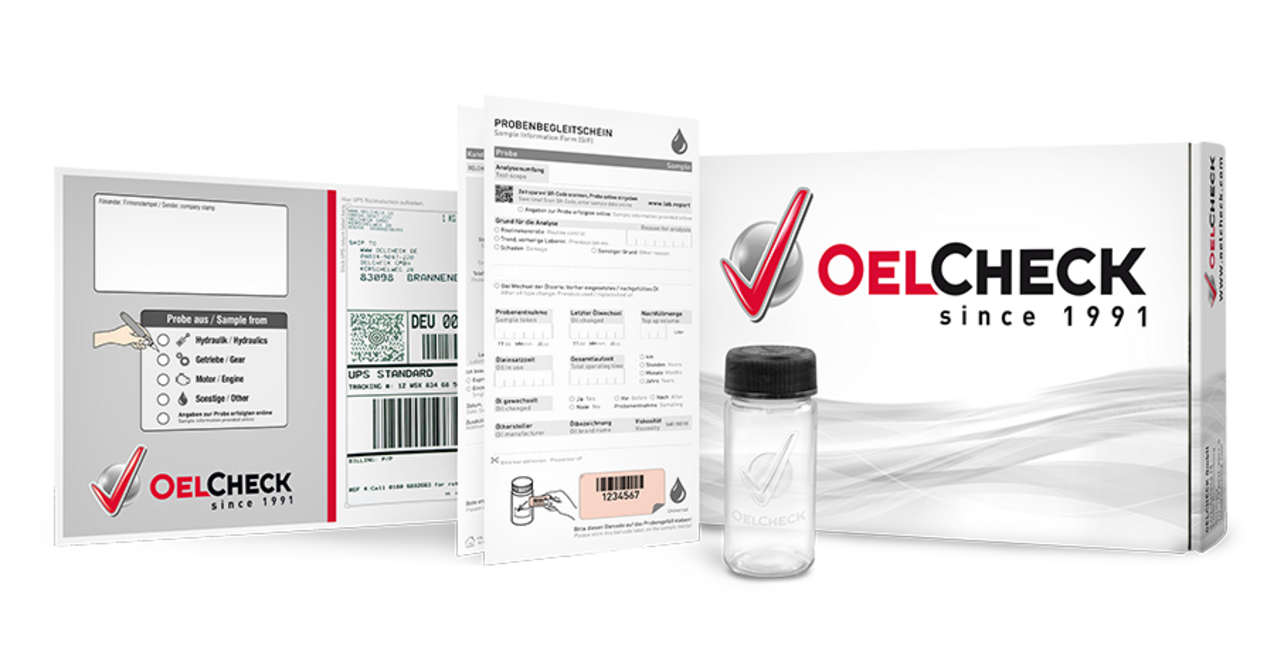Trend analyses - An investment in the future
Year of publication: 1998
Important changes in oil and machinery often go unnoticed because today's machines are often operated by semi-skilled and frequently changing people. They are not able to recognize a trend based on their daily handling of the plants. To avoid surprising failures, people try to take appropriate precautions with "preventive maintenance". However, this system incurs quite high costs. It can be even more expensive, however, if action is only taken when damage or failure of the machine occurs. By contrast, "condition-based maintenance" based on trend analyses offers an effective and low-cost alternative. These trend analyses are lubricant analyses that are carried out at regular intervals and are used to observe and comment on changes in relation to previous examinations. They do not only indicate when the oil needs to be changed, but also detect wear and impending damage in good time, thus optimizing maintenance costs. In addition, since oil changes are only carried out when required, less waste oil is produced, and the burden on the environment is reduced.
Indispensable: database and limit values
An important prerequisite for trend analyses is a comprehensive database. It must contain all previous laboratory results in connection with information about the machine and the fresh oil.
However, it is not enough just to determine values and observe their development. The limit values applicable to the respective aggregate must be compared with the current values and interpreted. The experienced tribologist will point out whether a critical limit value has been exceeded or whether there is already acute damage. If the assessor also has a pronounced knowledge of mechanical engineering and oil chemistry, he or she can diagnose accurate trends on the basis of the limit values.
Convincing: an example from real life
The effectiveness of using lubricant analyses to monitor trends is shown by the example of a gear from a bulldozer. The drive gear is only filled with approx. 7 l of oil. The costs for an oil analysis with less than 100 Euro are higher than the costs for the oil. Nevertheless, it makes sense to check the oil at least once a year or every 500 operating hours.
The gear runs in dirt and water. Vibrations and strongly fluctuating speeds also cause problems and promote wear. An inspection involves disassembly and thus considerable effort.
Gear oil analysis, on the other hand, is a simple type of inspection. It checks the condition of the oil and indicates whether increased wear is present. The following trend analysis of the gear oil provides information on the wear metals, contaminants and the condition of the oil and additives – and allows clear predictions to be made. Samples at 1,500 and 2,000 operating hours show a slight viscosity change, some increased oxidation, but no water or dust and no unusual wear.
The experienced tribologist comments: "The oil and gear can be used for another 500 operating hours under similar operating conditions without maintenance." The same gear unit shows a clearly different trend at 2,500 operating hours: serious damage is impending. "The decreased viscosity, the increased phosphorus value and the "ester band" visible as oxidation in the infrared spectrum show that bio-oil entered the gear oil via the hydraulic motor. The sealing of the gear to the outside also seems to be defective. Therefore, water and dust have entered.
The oil should be changed immediately to avoid catastrophic damage. The hydraulic system and gear should be checked for leaks. Because of the high content of chromium as rolling bearing steel and aluminum and copper as cage material, a rolling bearing inspection should be performed. It must be checked whether misalignments due to rolling bearing wear damaged the seals and are thus the cause of the high dust and water content".
| Trend analysis: gear oil of a bulldozer | |||||
|---|---|---|---|---|---|
| Operating hours | 2500 | 2000 | 1500 | 5 | |
| Iron | mg/kg | 2,630 | 288 | 202 | 21 |
| Chrome | mg/kg | 48 | 12 | 10 | 1 |
| Tin | mg/kg | 11 | 2 | 1 | 0 |
| Aluminum | mg/kg | 118 | 56 | 45 | 3 |
| Nickel | mg/kg | 8 | 4 | 4 | 1 |
| Copper | mg/kg | 225 | 36 | 21 | 3 |
| Lead | mg/kg | 12 | 6 | 2 | 0 |
| Molybdenum | mg/kg | 4 | 1 | 0 | 0 |
| PQ index | – | 2,631 | 133 | 84 | 22 |
| Silicon | mg/kg | 472 | 142 | 84 | 3 |
| Water | ppm | 2,347 | < 1,000 | < 1,000 | < 1,000 |
| Sodium | mg/kg | 32 | 6 | 5 | 1 |
| Viscosity 40 ° C | mm2/ s | 285.63 | 311.01 | 327.26 | 336.04 |
| Viscosity 100 ° C | mm2/ s | 24.13 | 25.06 | 26.41 | 28.68 |
| Viscosity index | – | 107 | 104 | 107 | 116 |
| Oxidation | A/cm | 68 | 16 | 7 | 4 |
| Potassium | mg/kg | 26 | 1 | 0 | 0 |
| Calcium | mg/kg | 64 | 9 | 9 | 6 |
| Magnesium | mg/kg | 45 | 12 | 8 | 0 |
| Boron | mg/kg | 8 | 3 | 1 | 0 |
| Zinc | mg/kg | 32 | 38 | 31 | 29 |
| Phosphorus | mg/kg | 1,632 | 1,416 | 1,398 | 1,451 |
| Barium | mg/kg | 42 | 8 | 9 | 8 |
| AN | mgKOH/g | 1.69 | 1.36 | 1.31 | 1.22 |
Trend analyses: effective and inexpensive
As in the example, trend analyses are important suppliers of information in practice and a low-cost and fast instrument for condition-based maintenance. The analysis results are available within a few hours with reproducible accuracy. The accurate diagnosis of a tribologist comments on the values. The results can be immediately incorporated into a maintenance program.
Regular trend analyses are an investment in the future. They pay for themselves in a short time through the early detection of possible damage and through extended intervals between oil changes.



